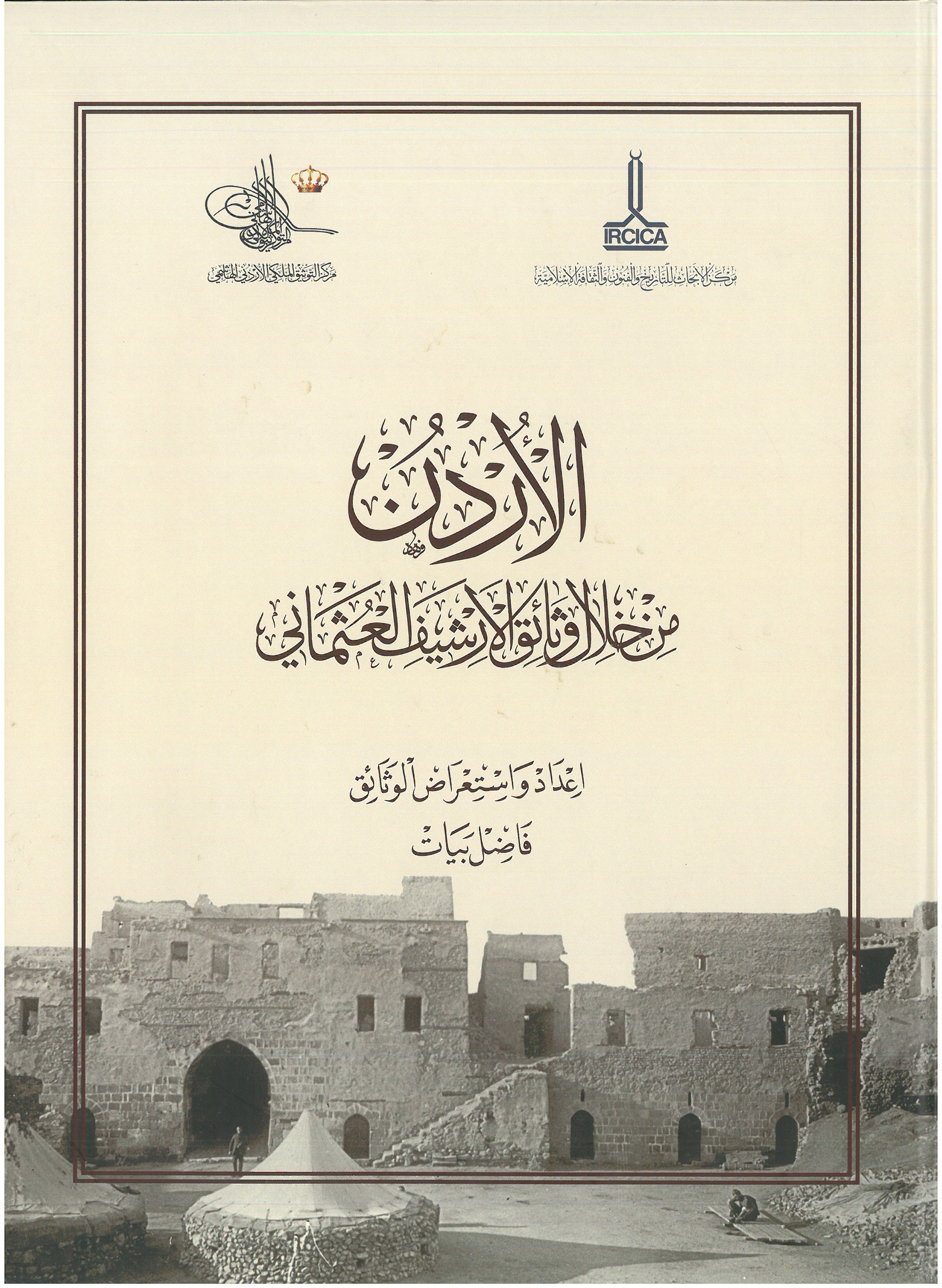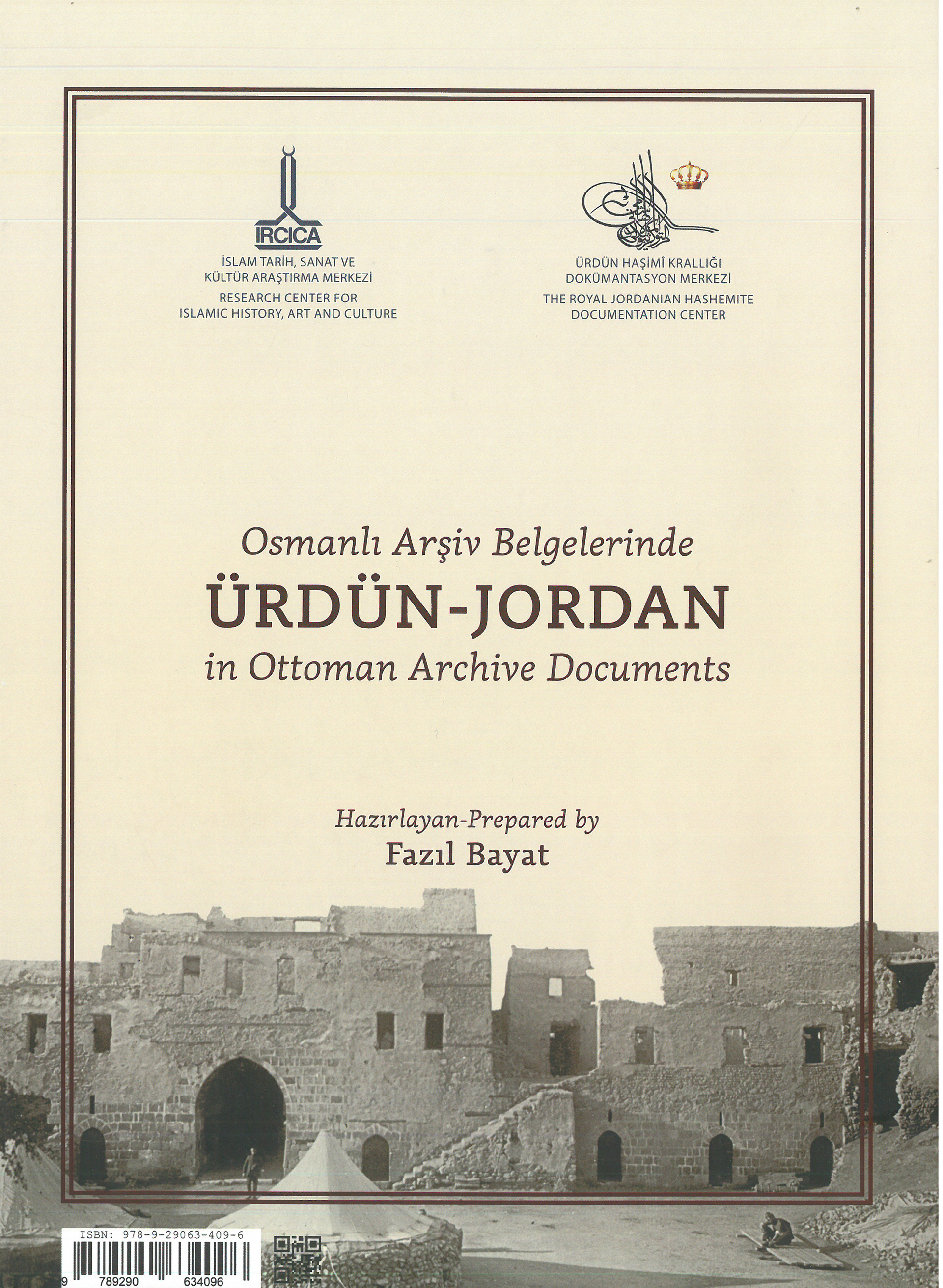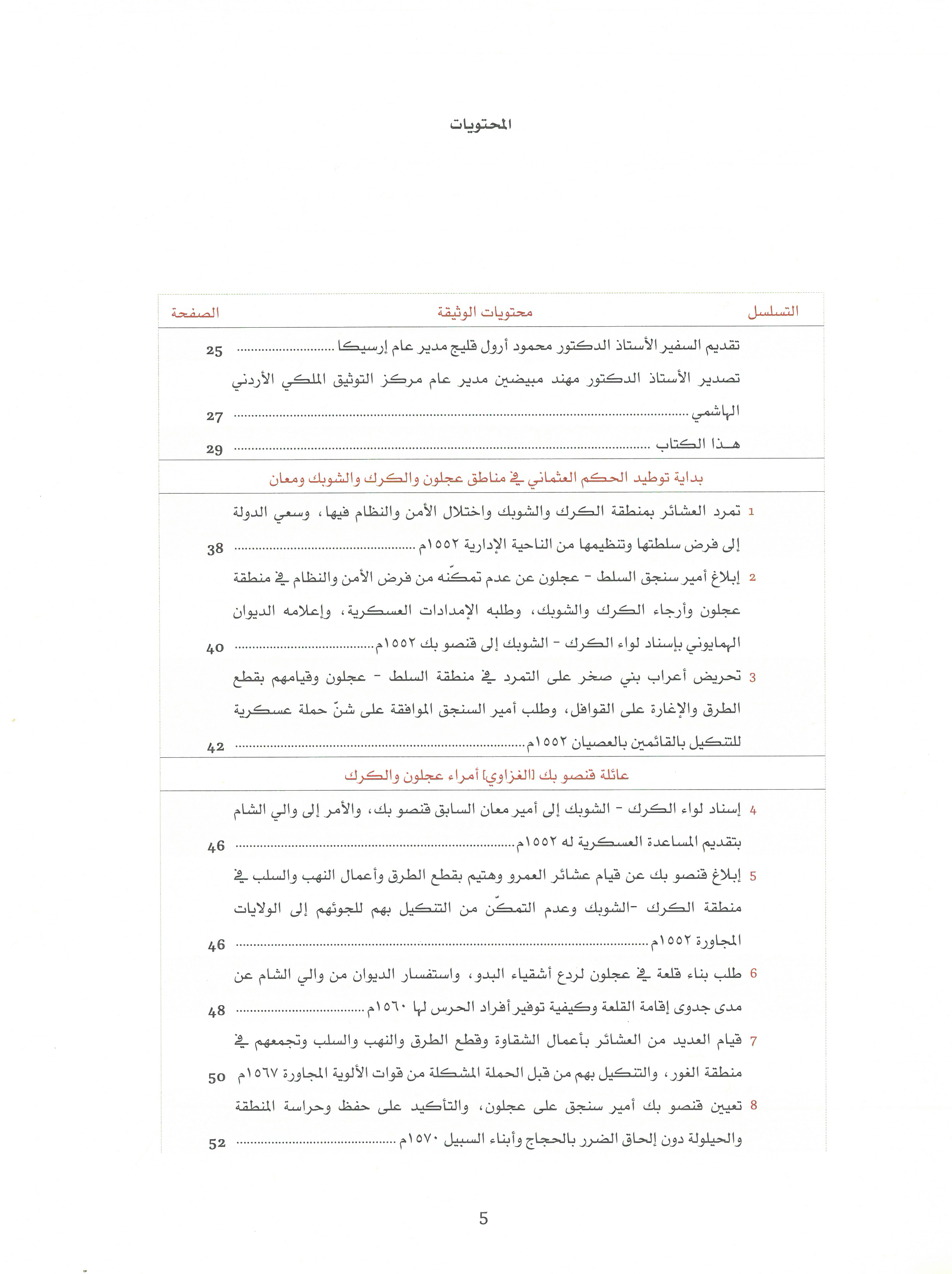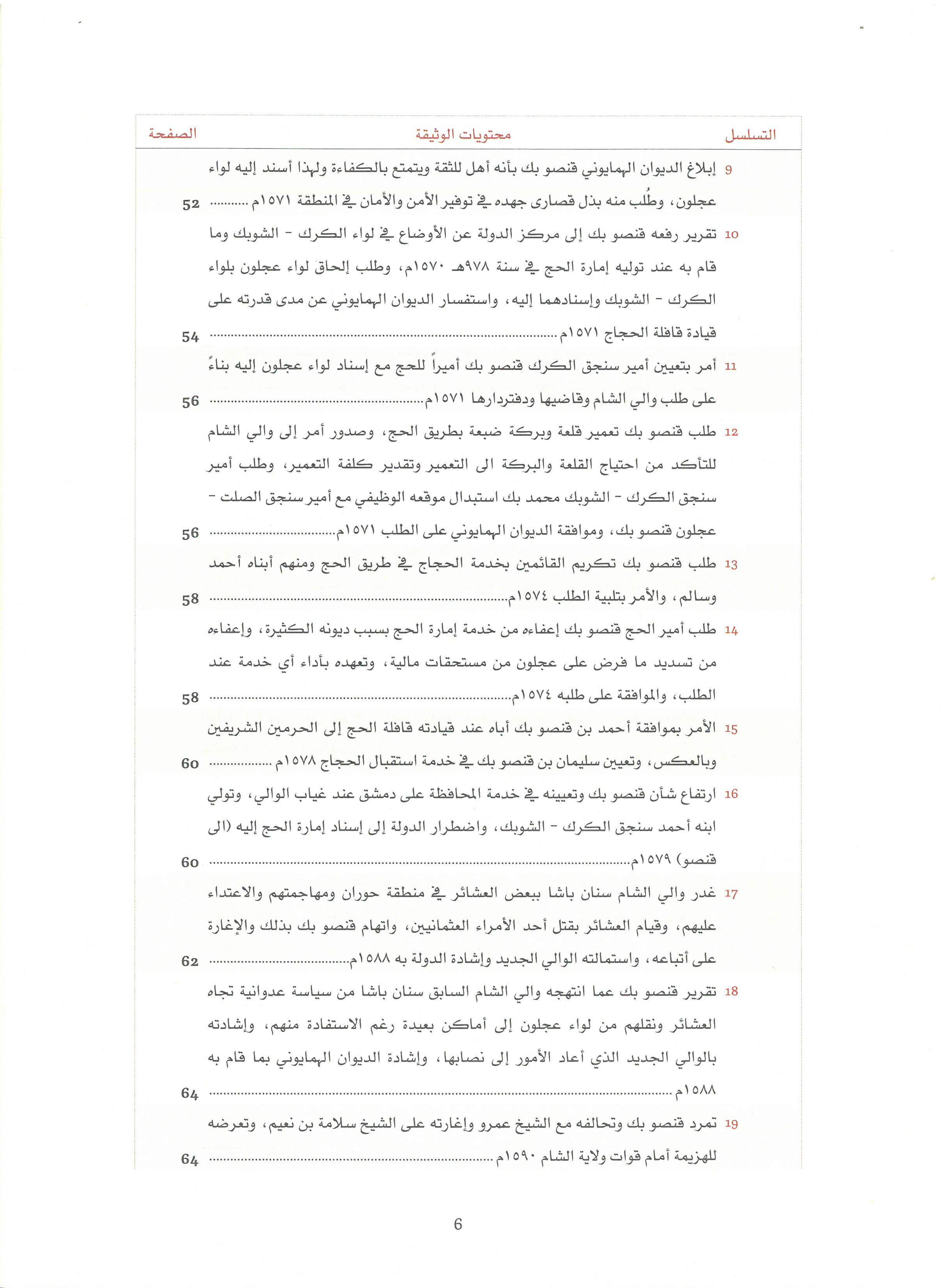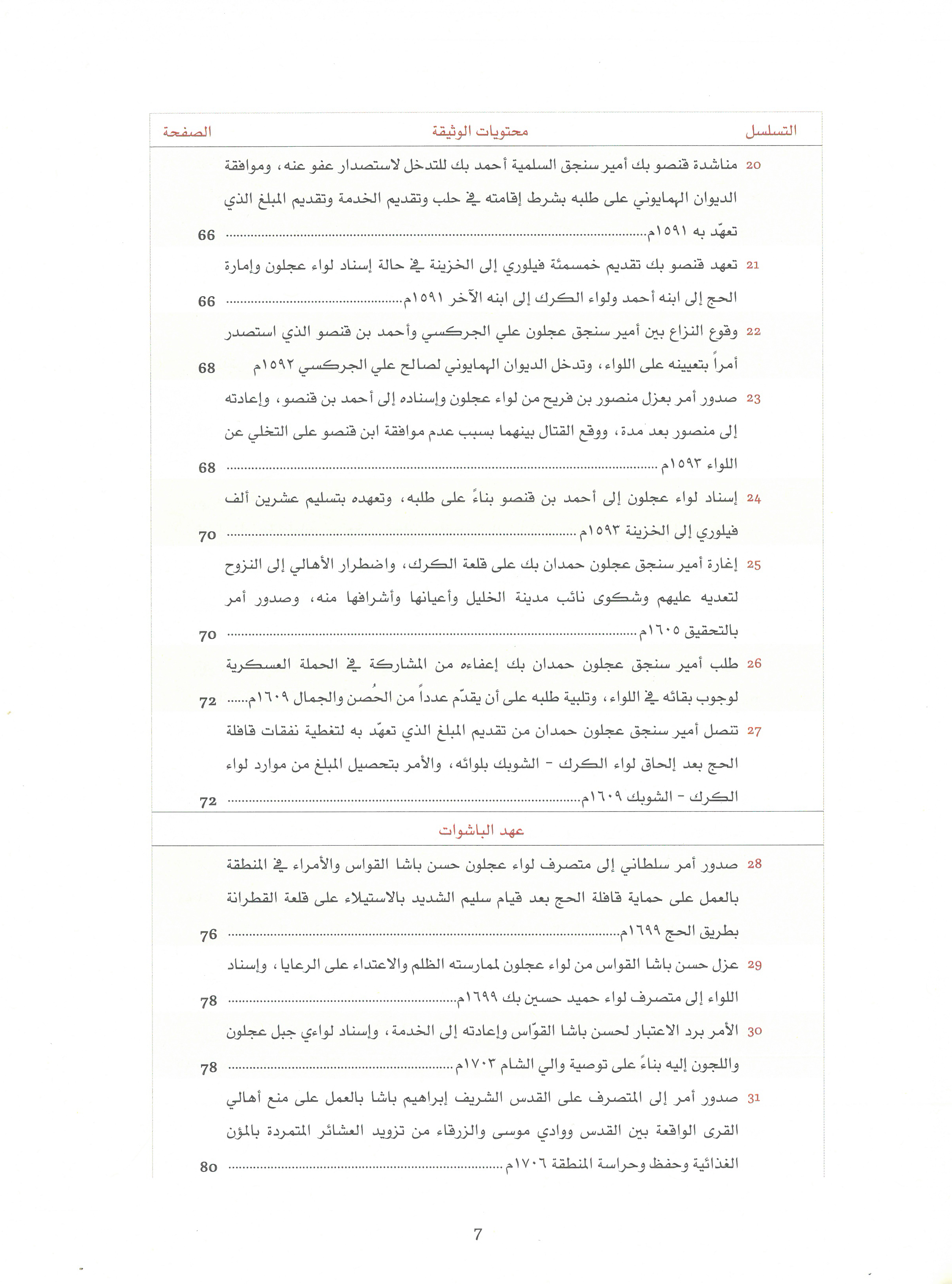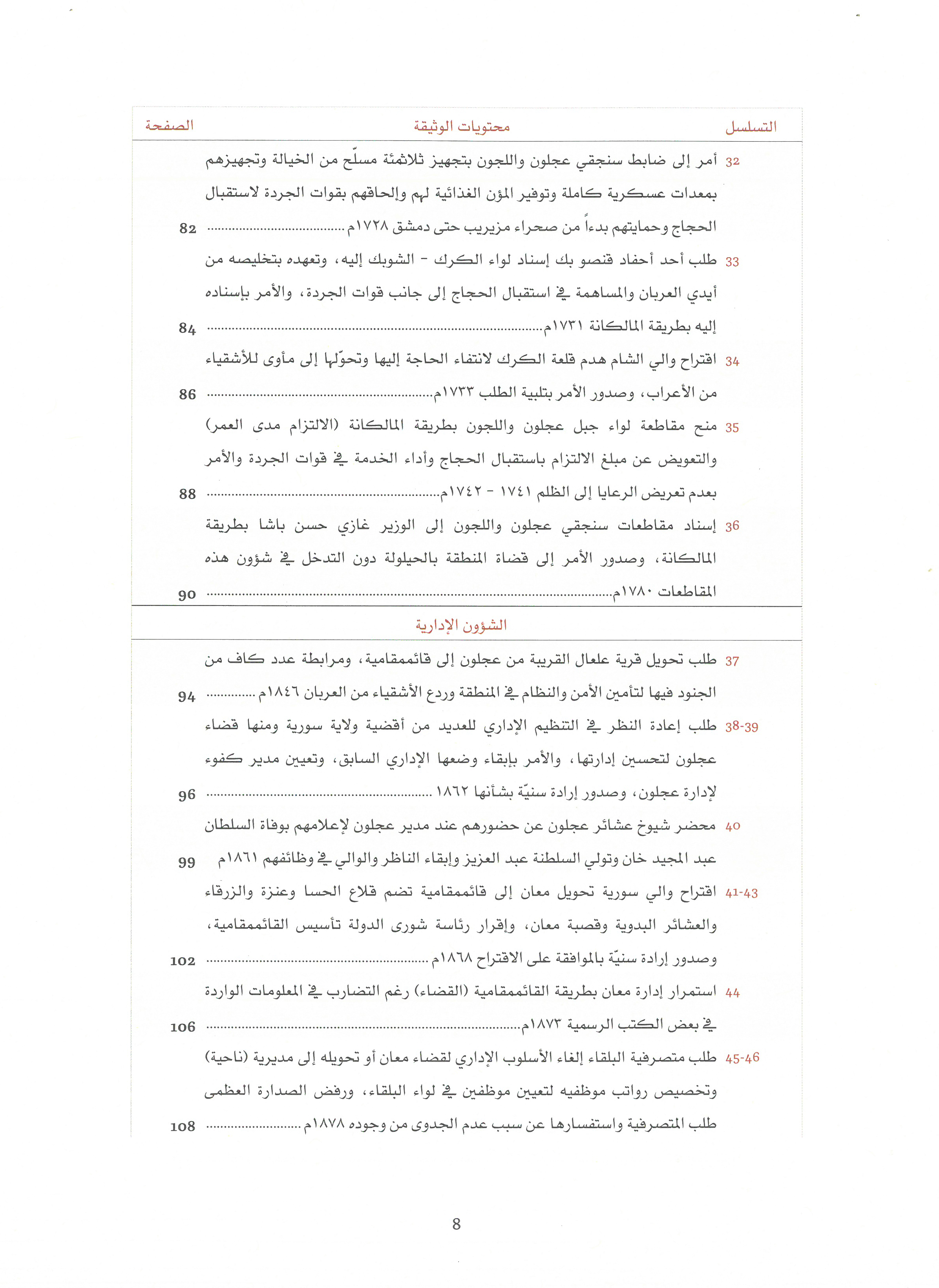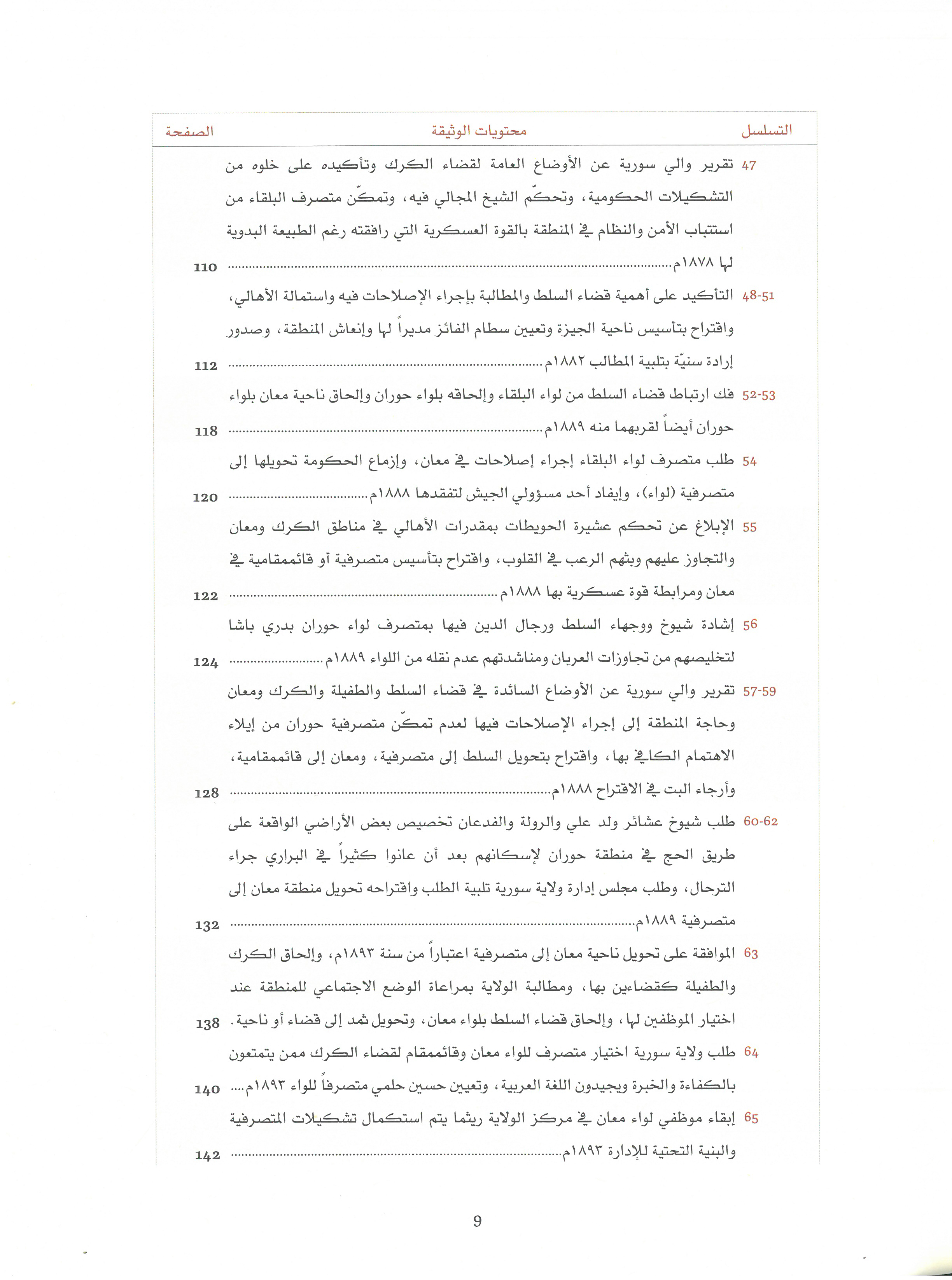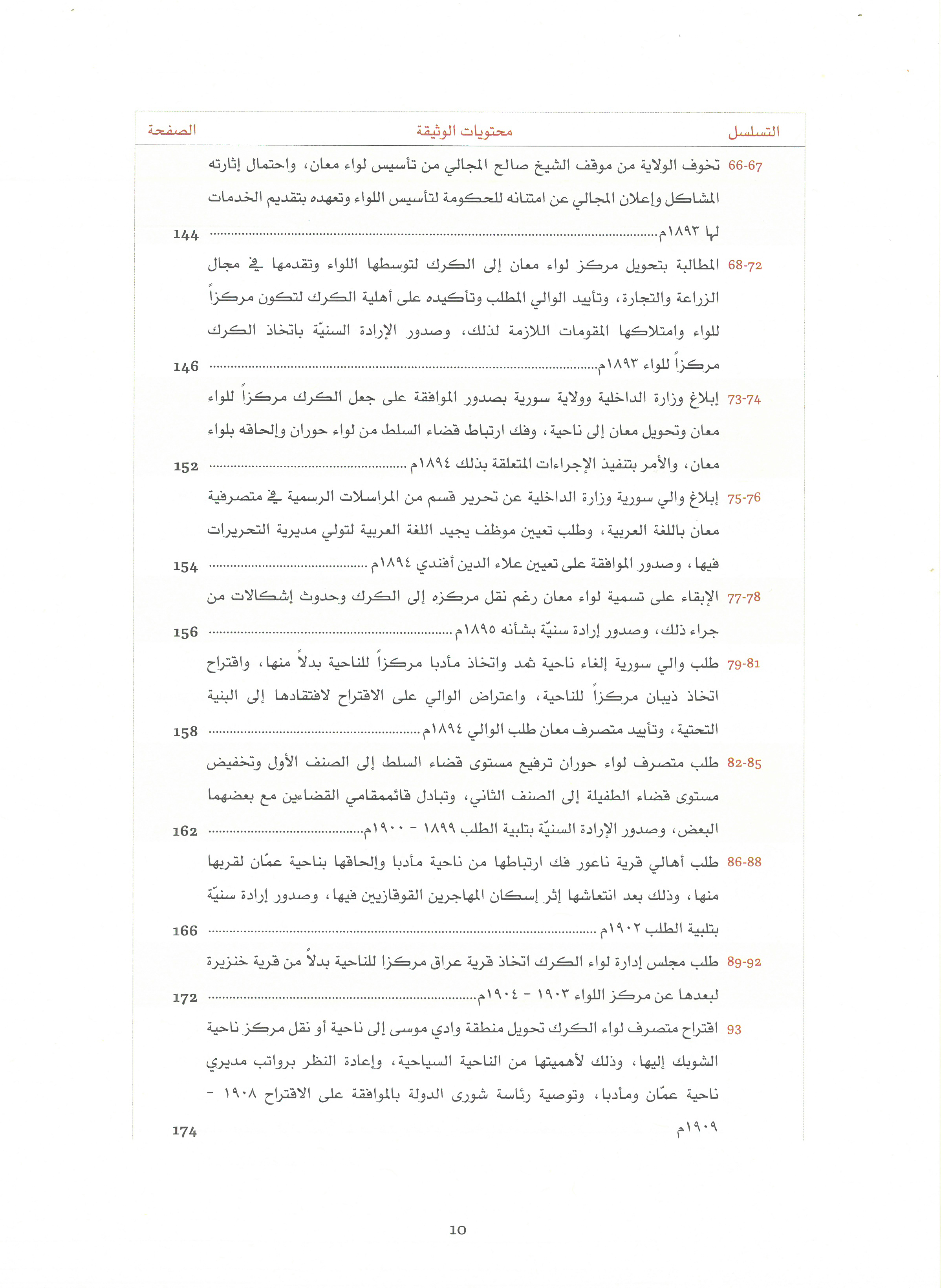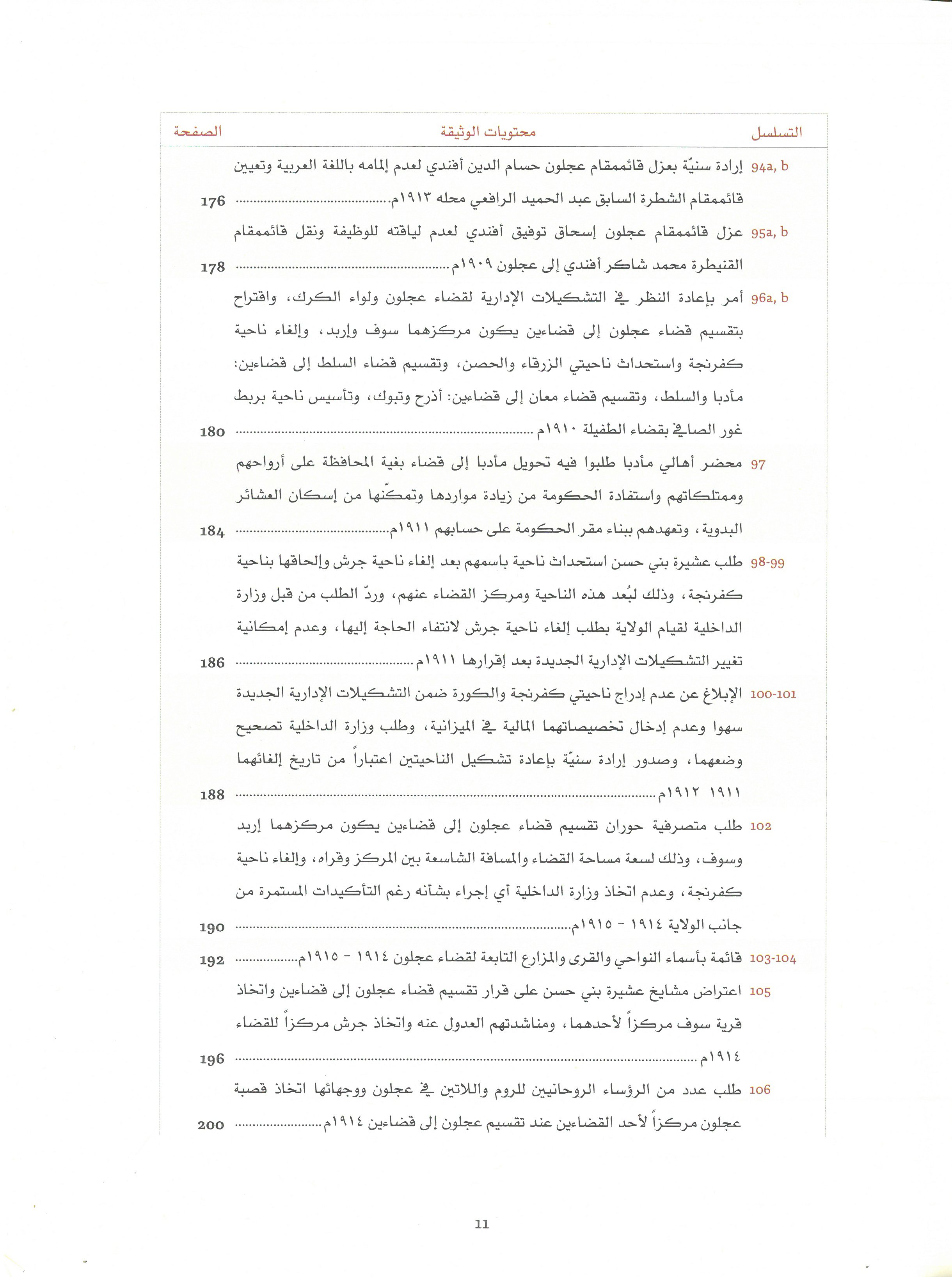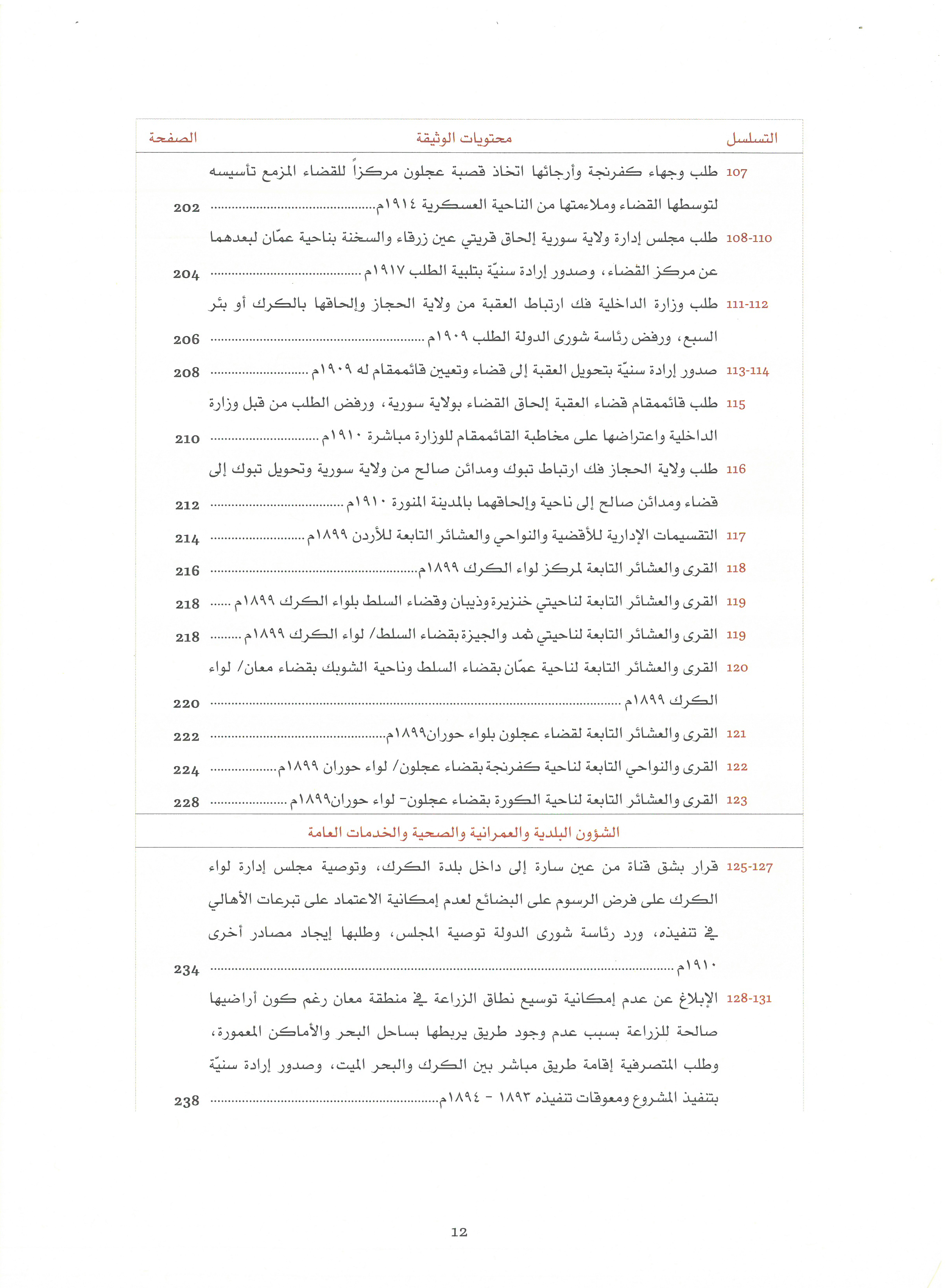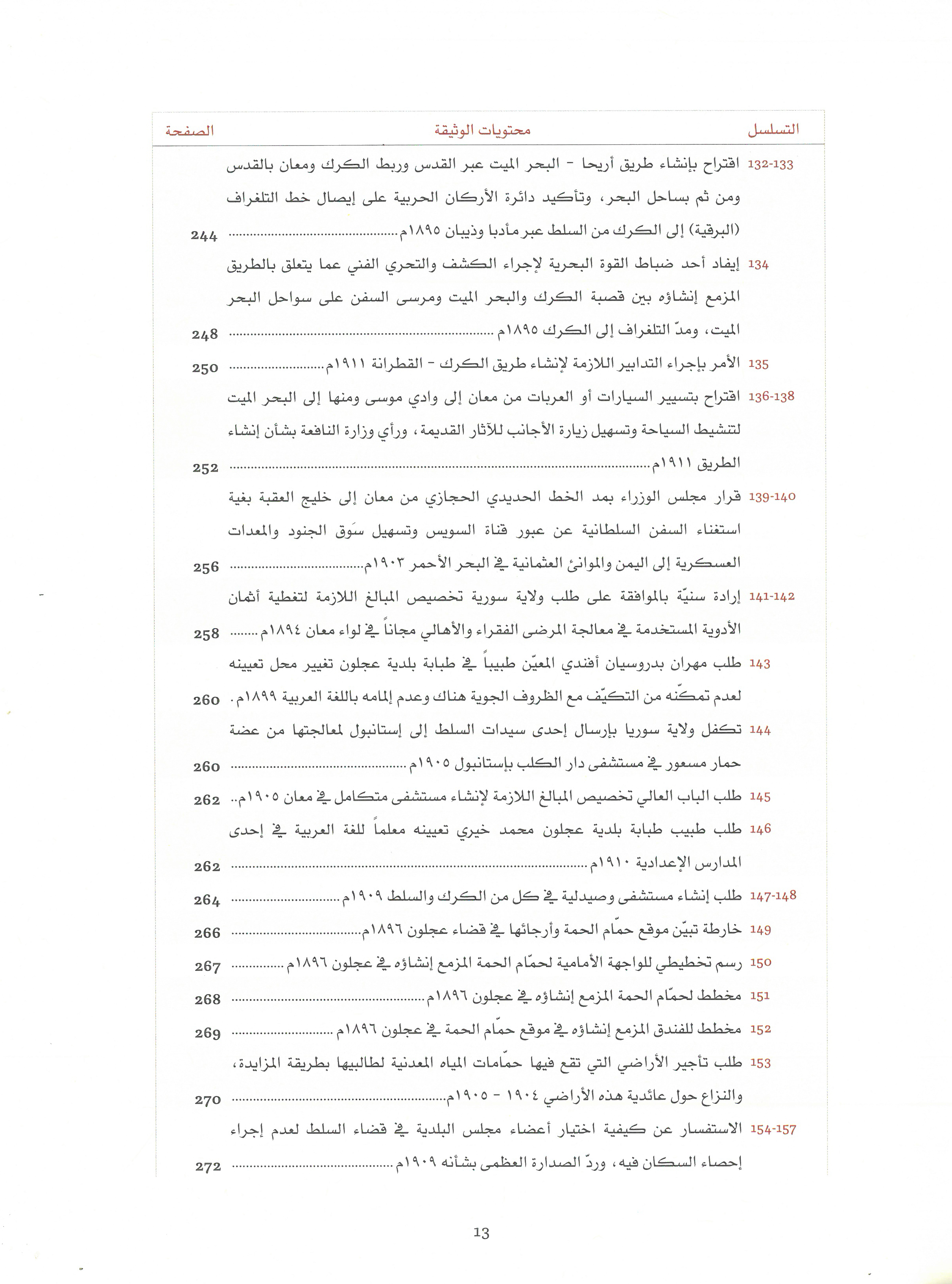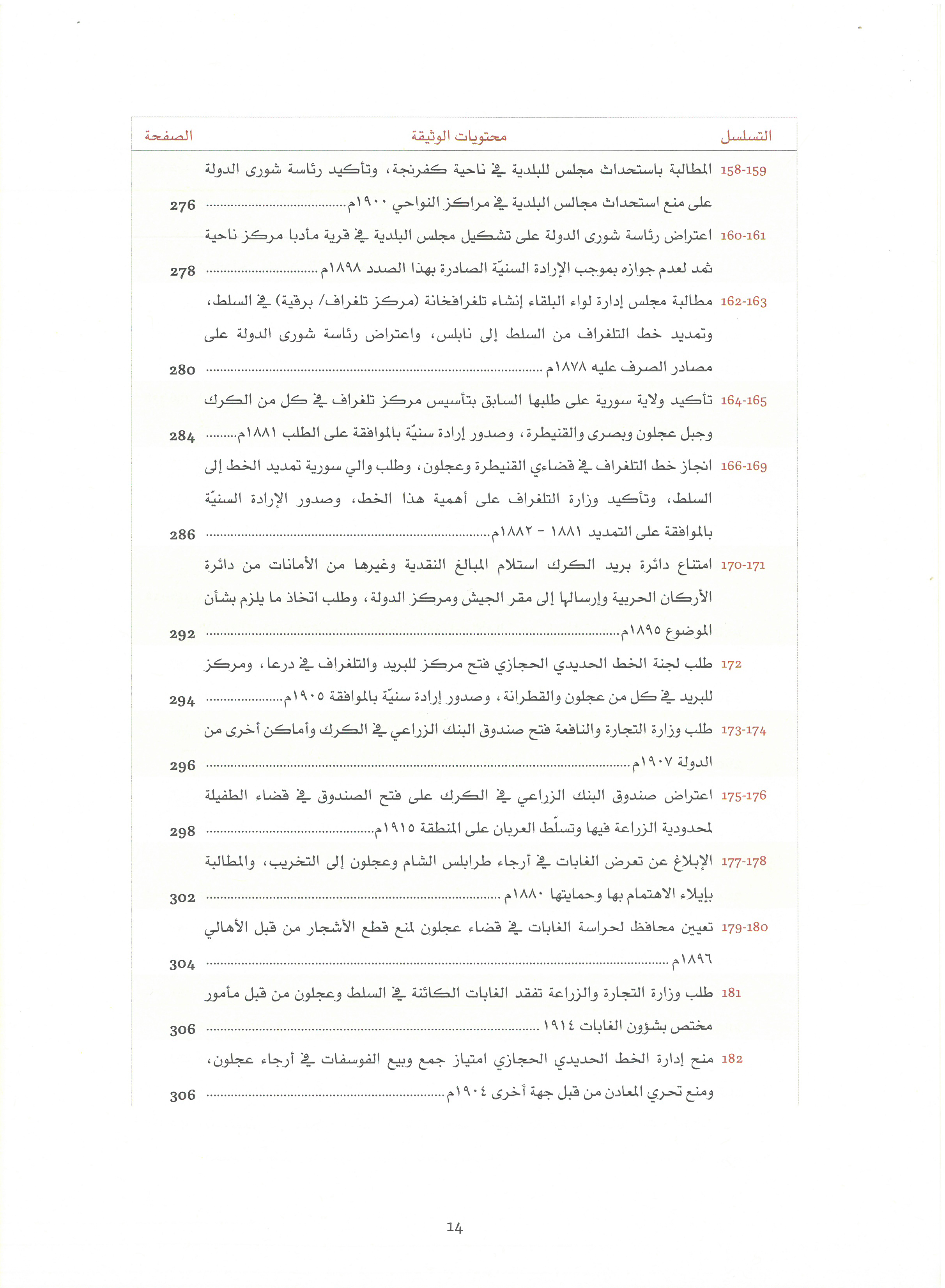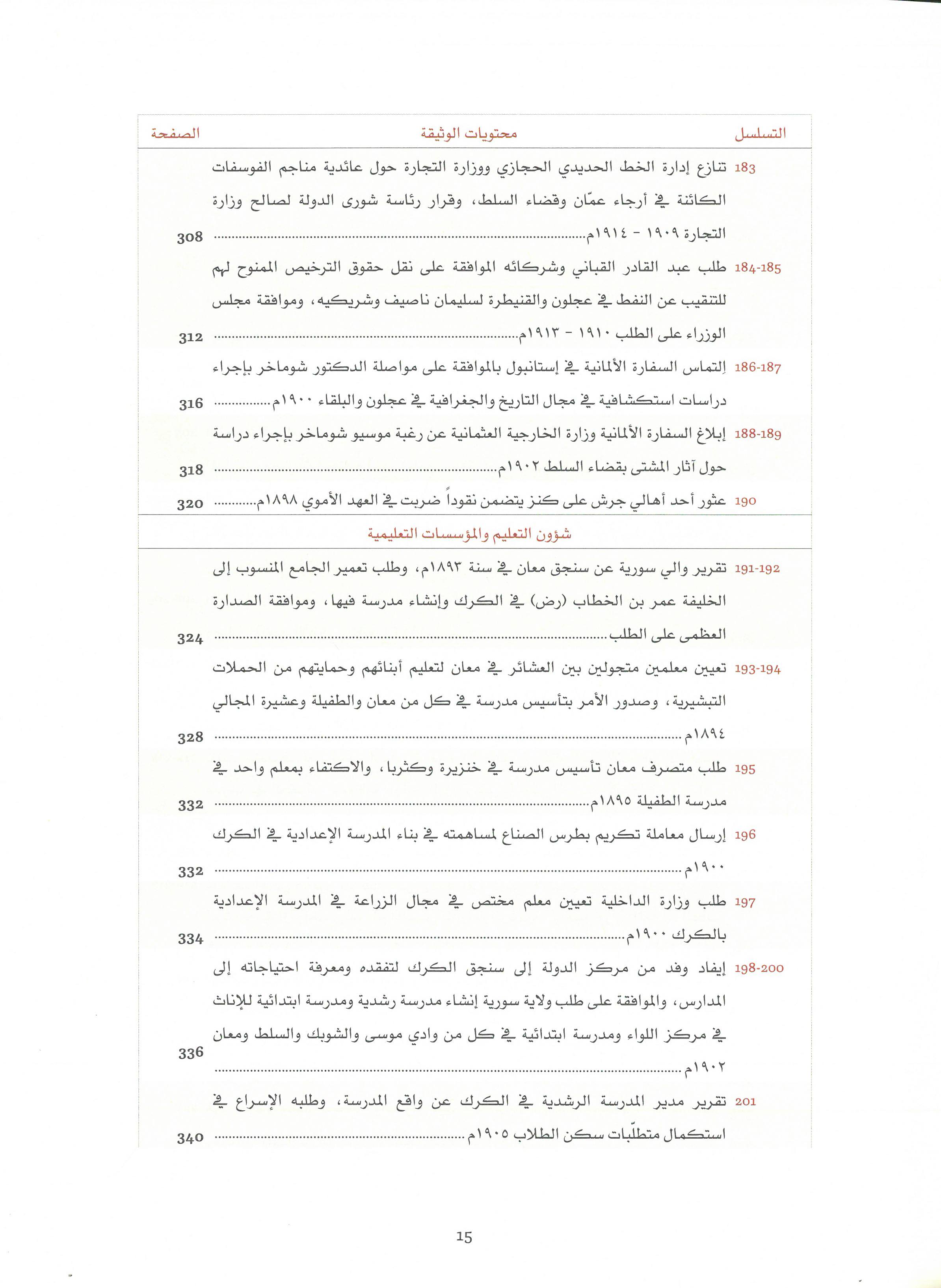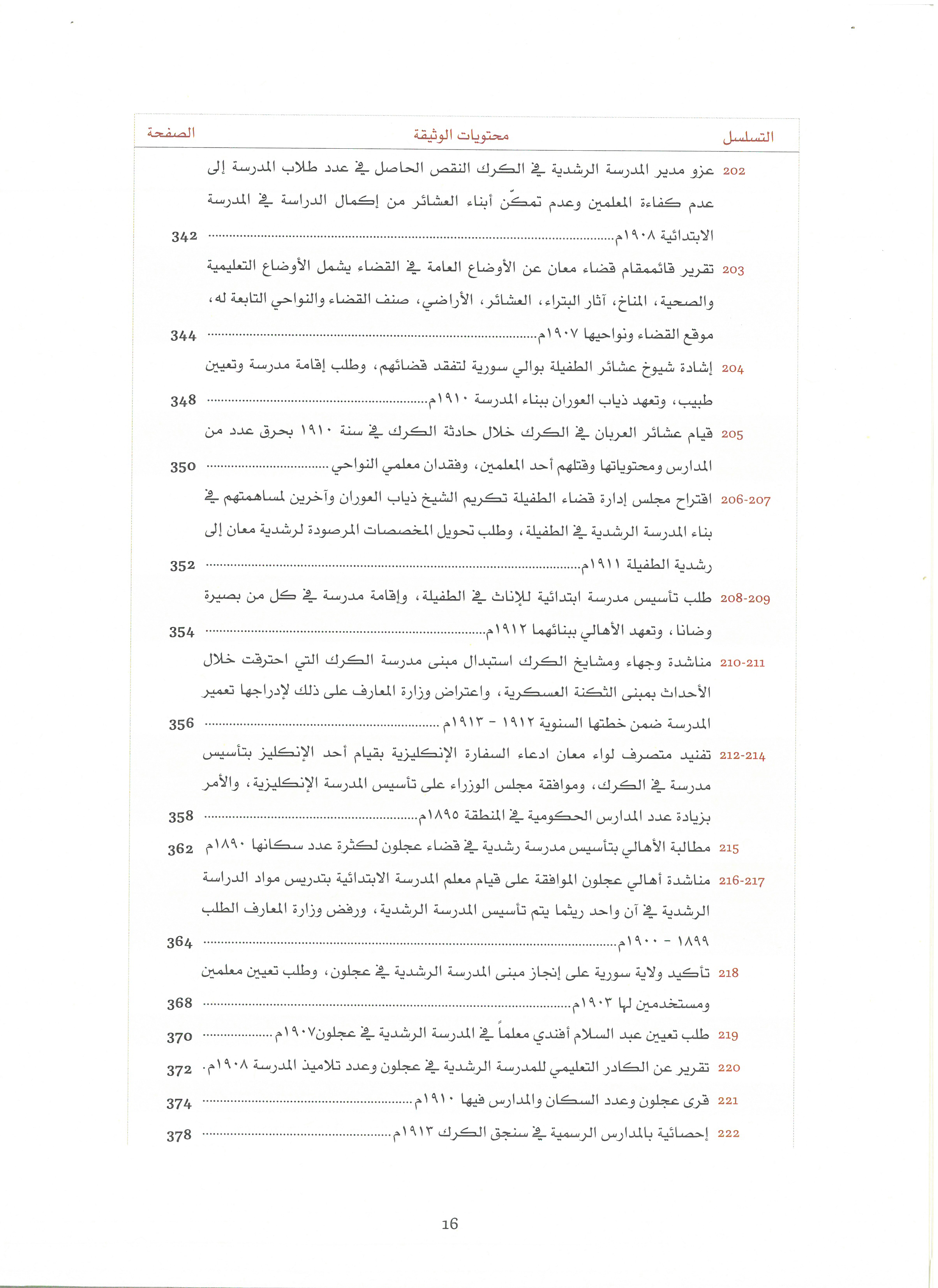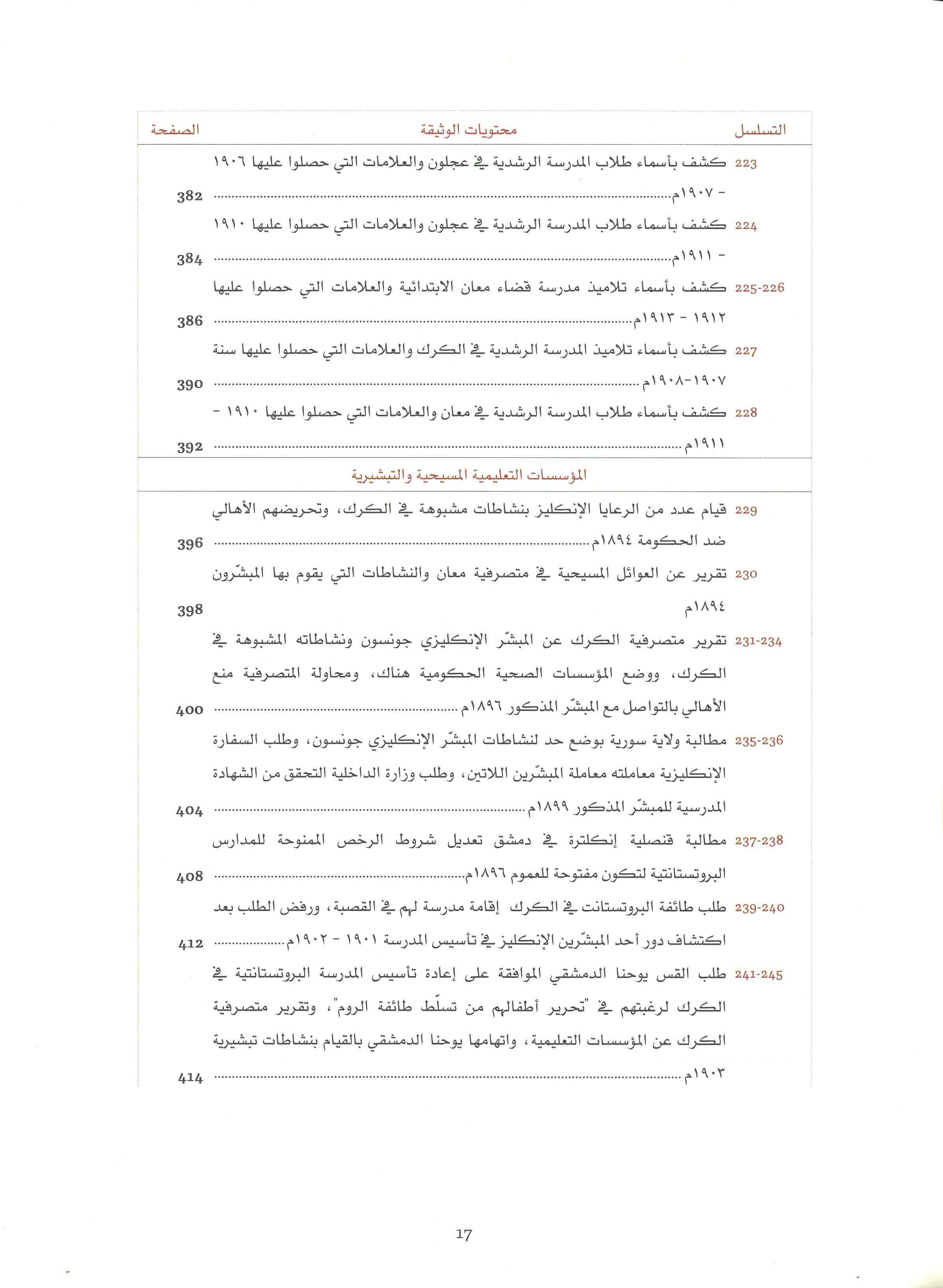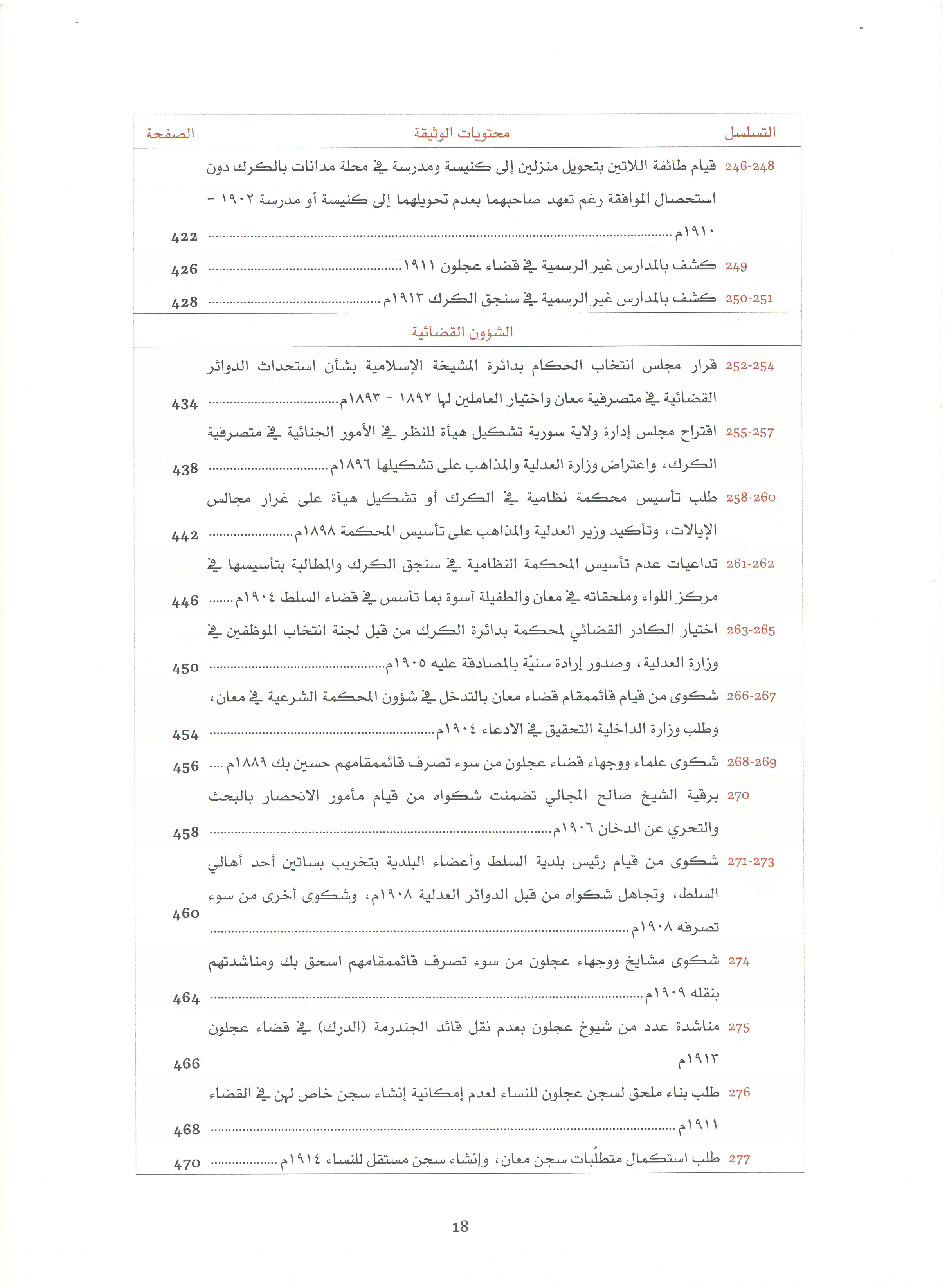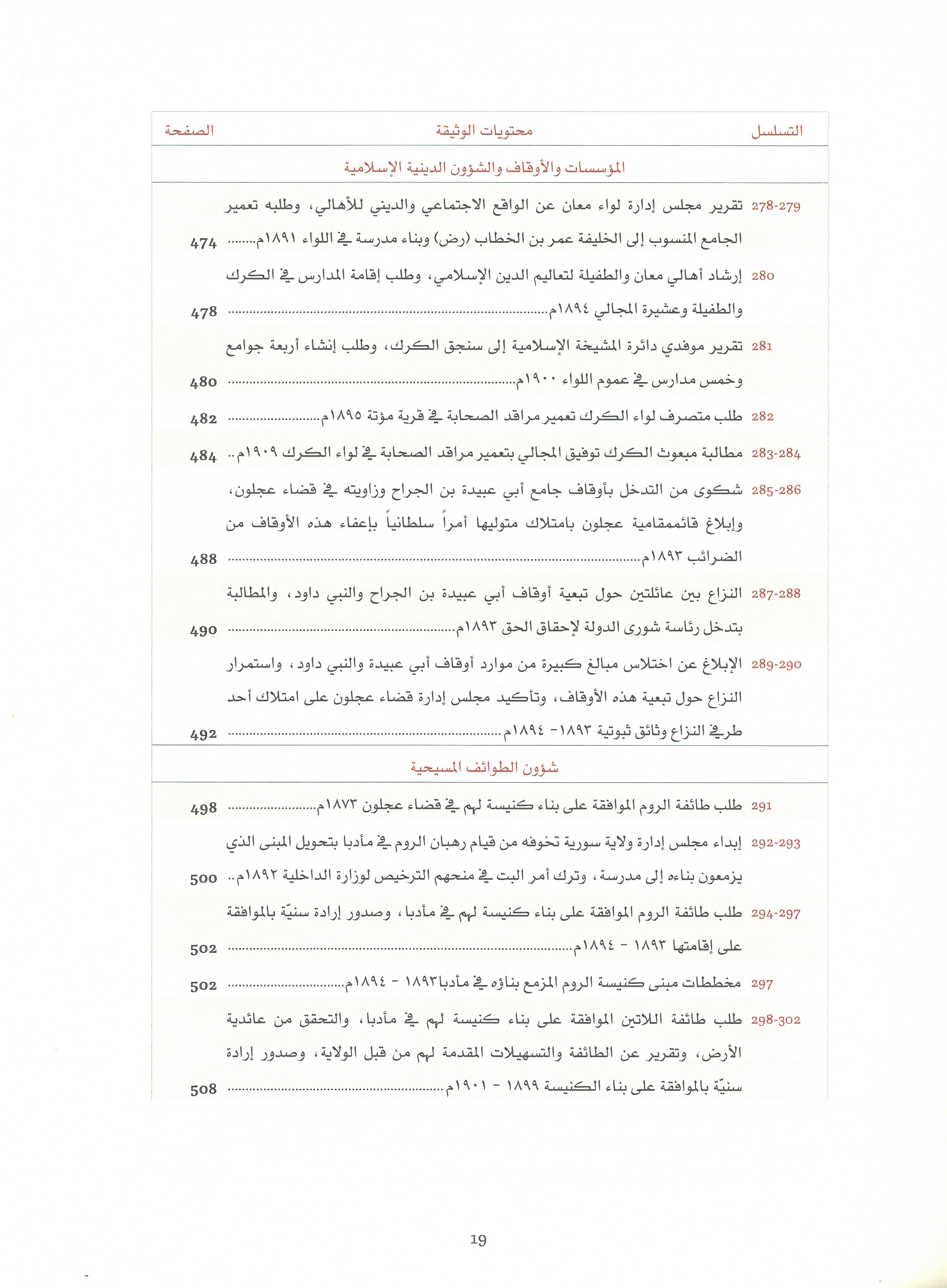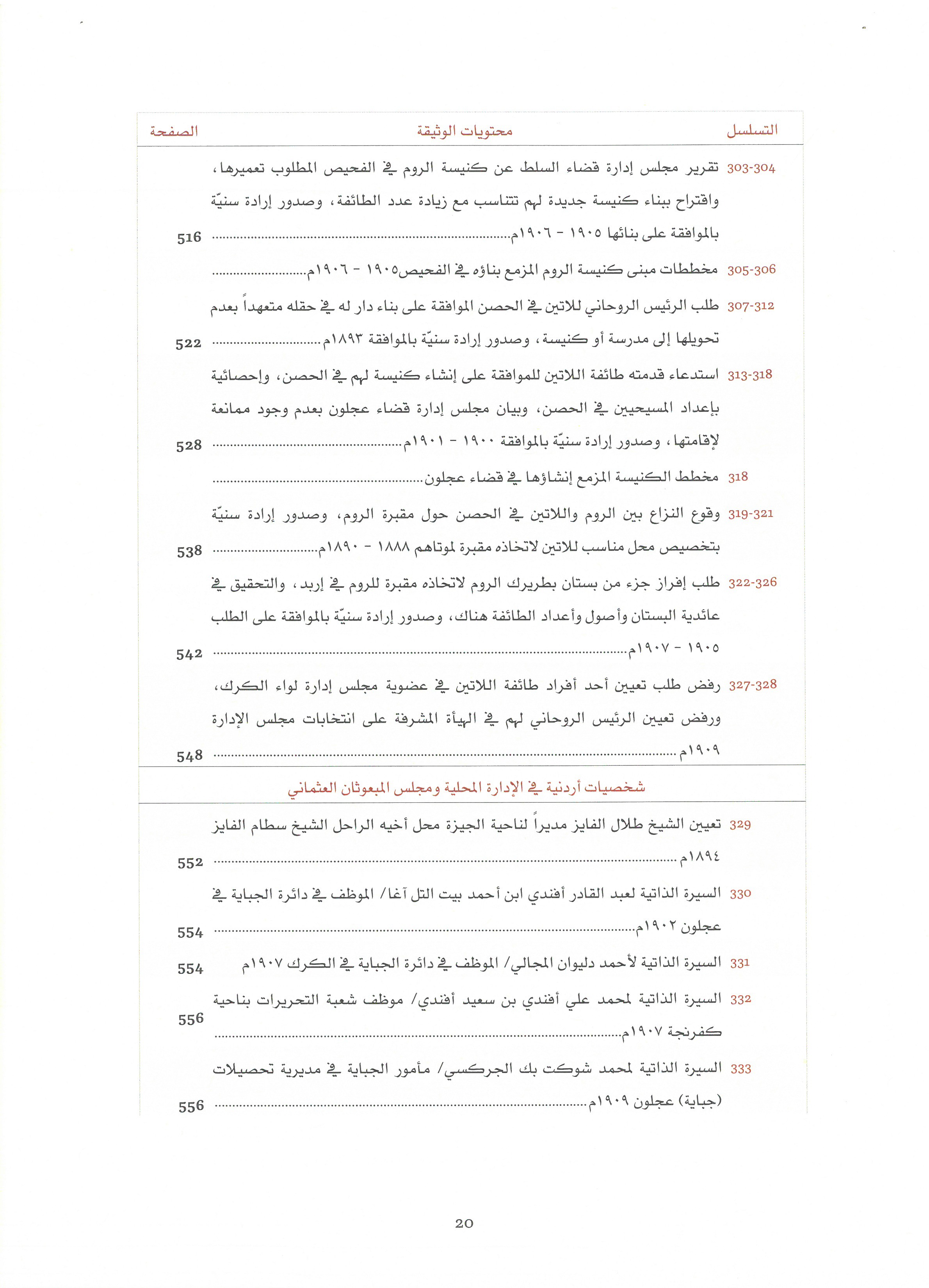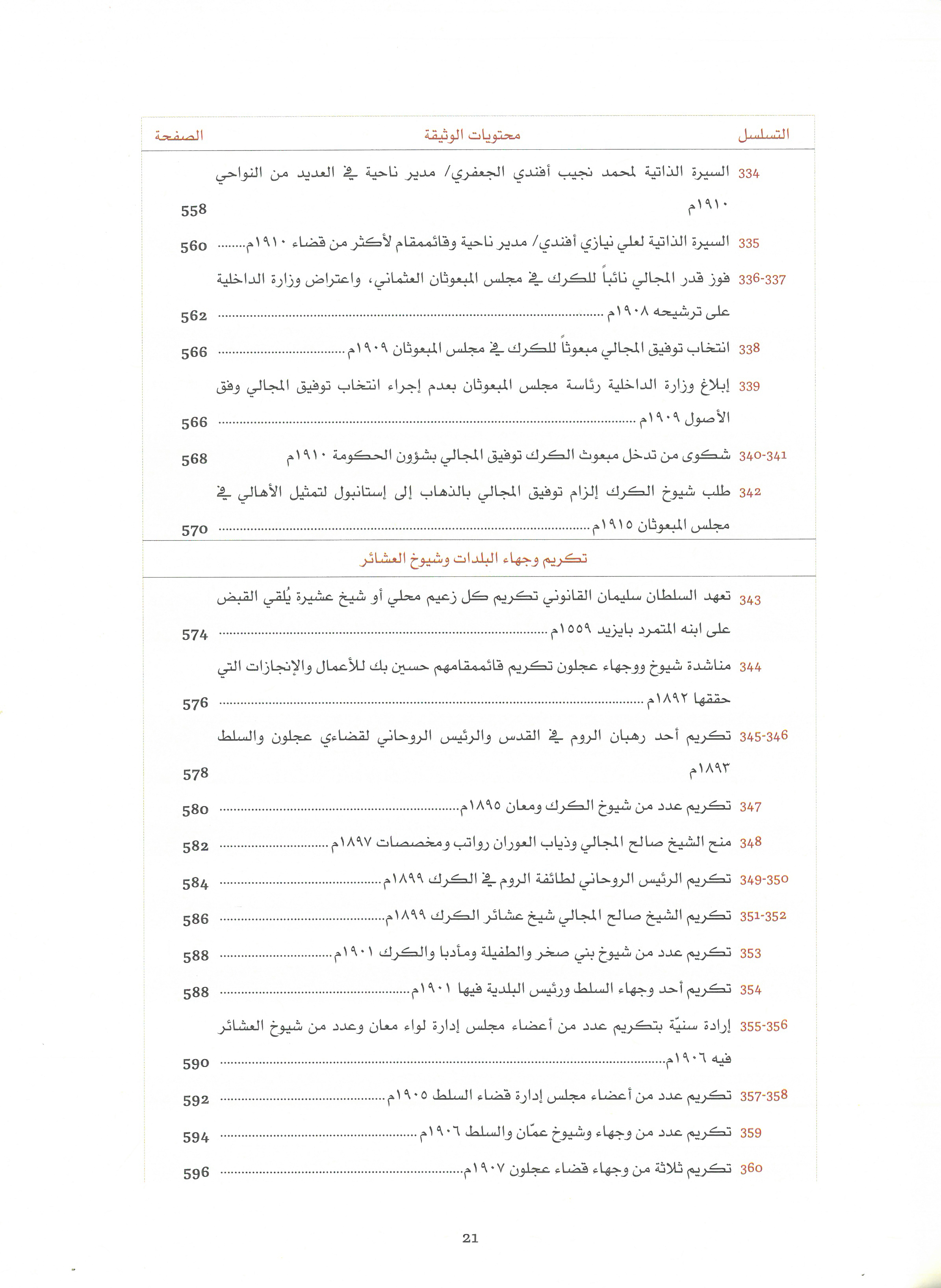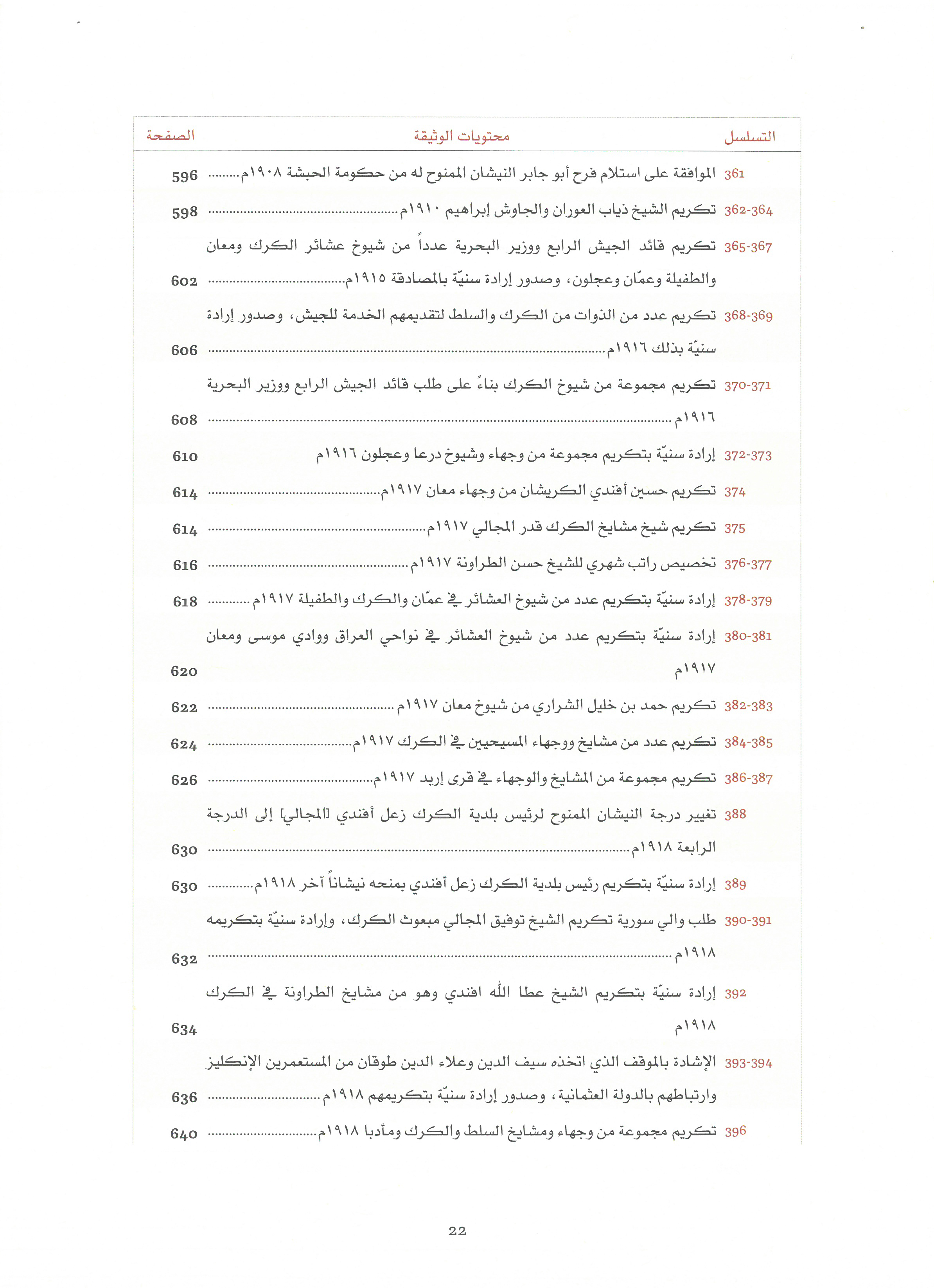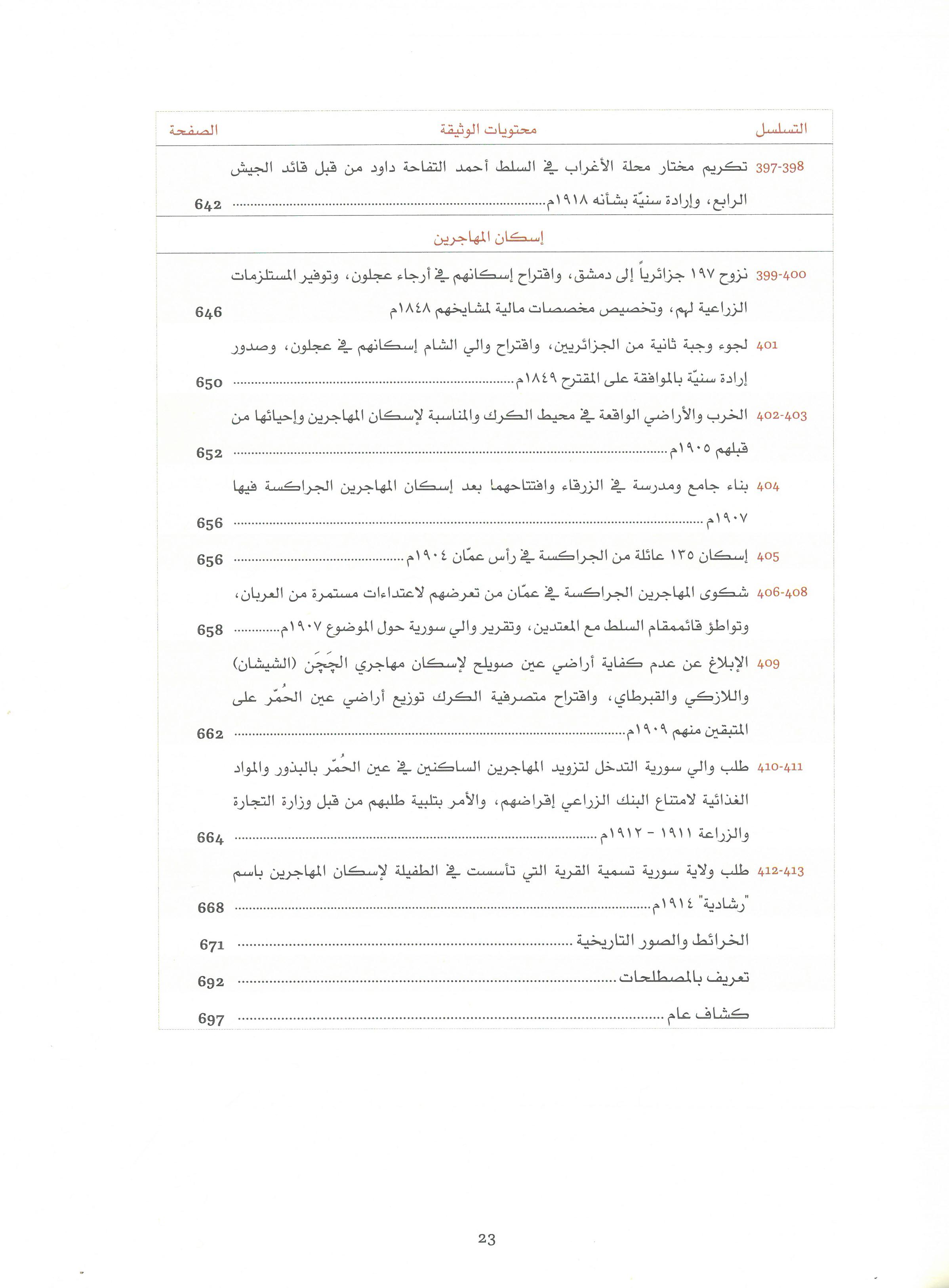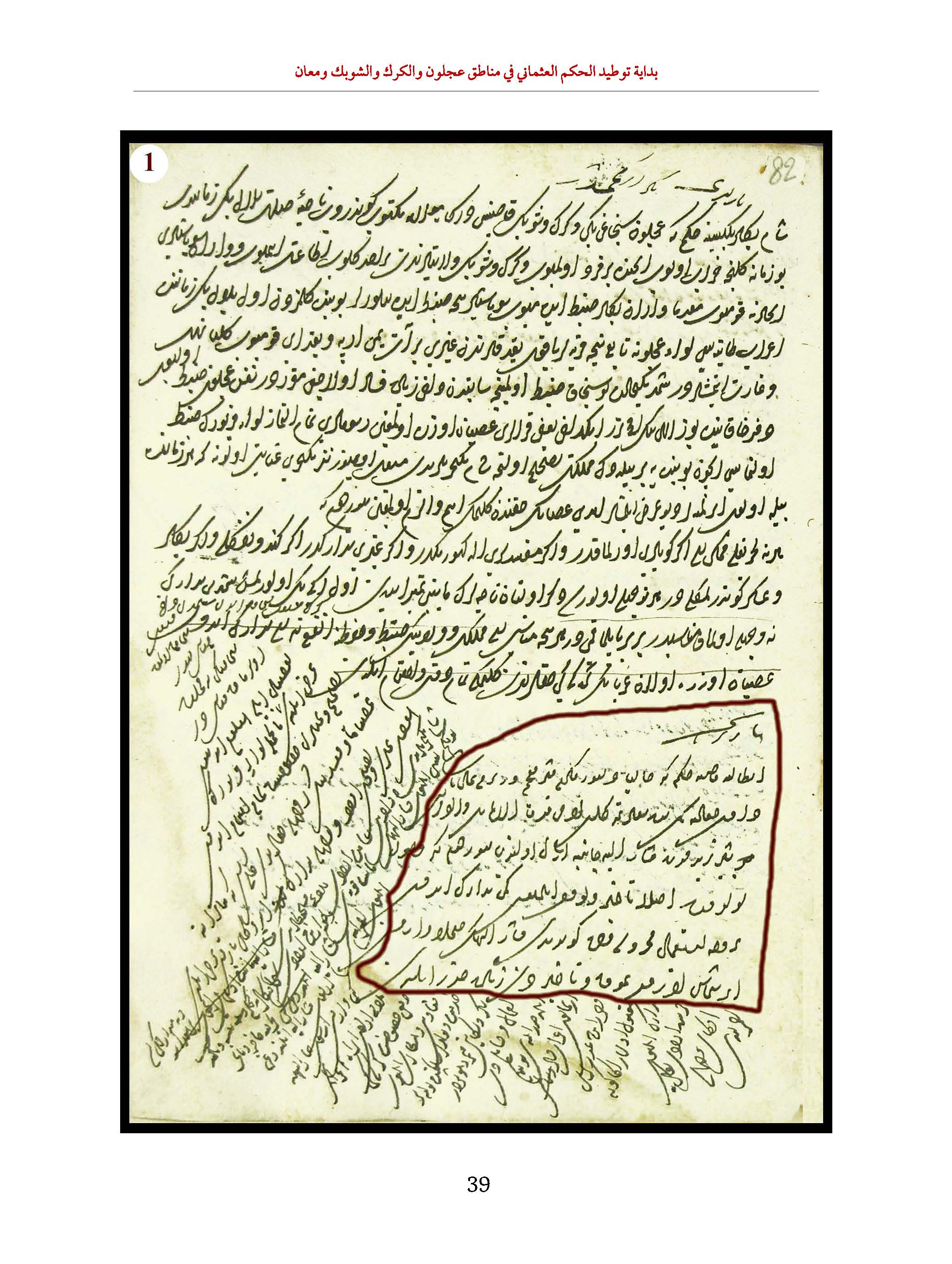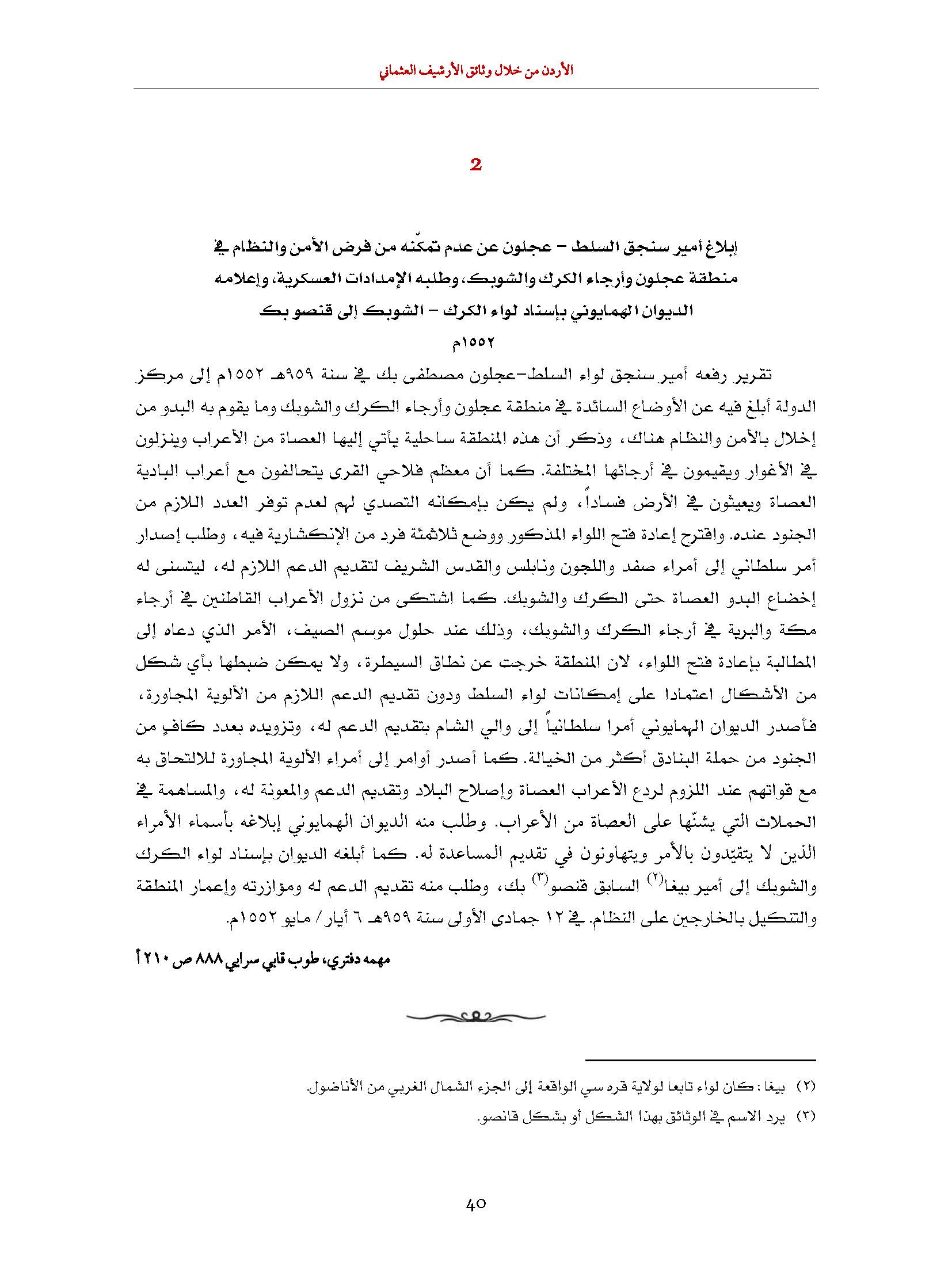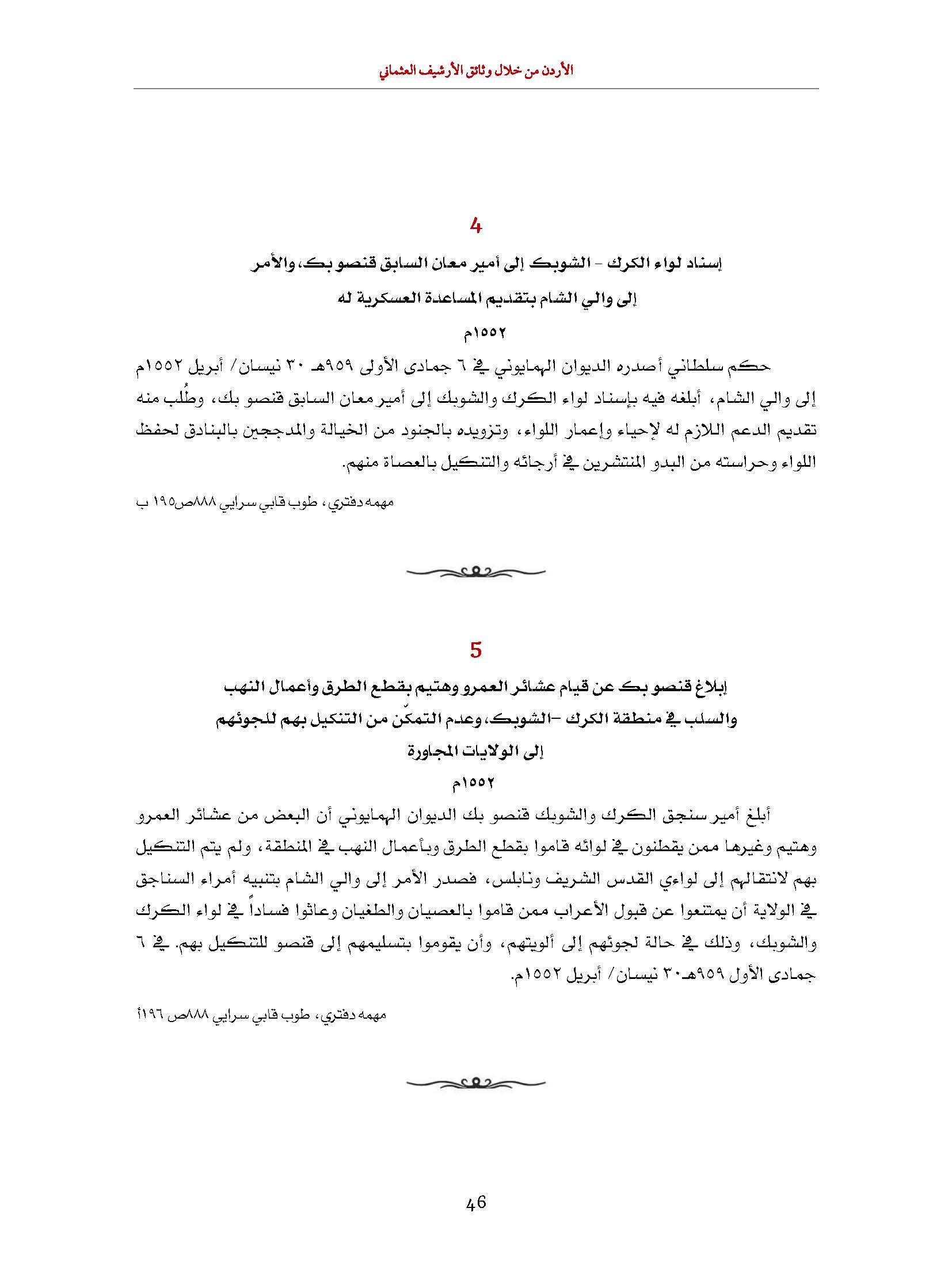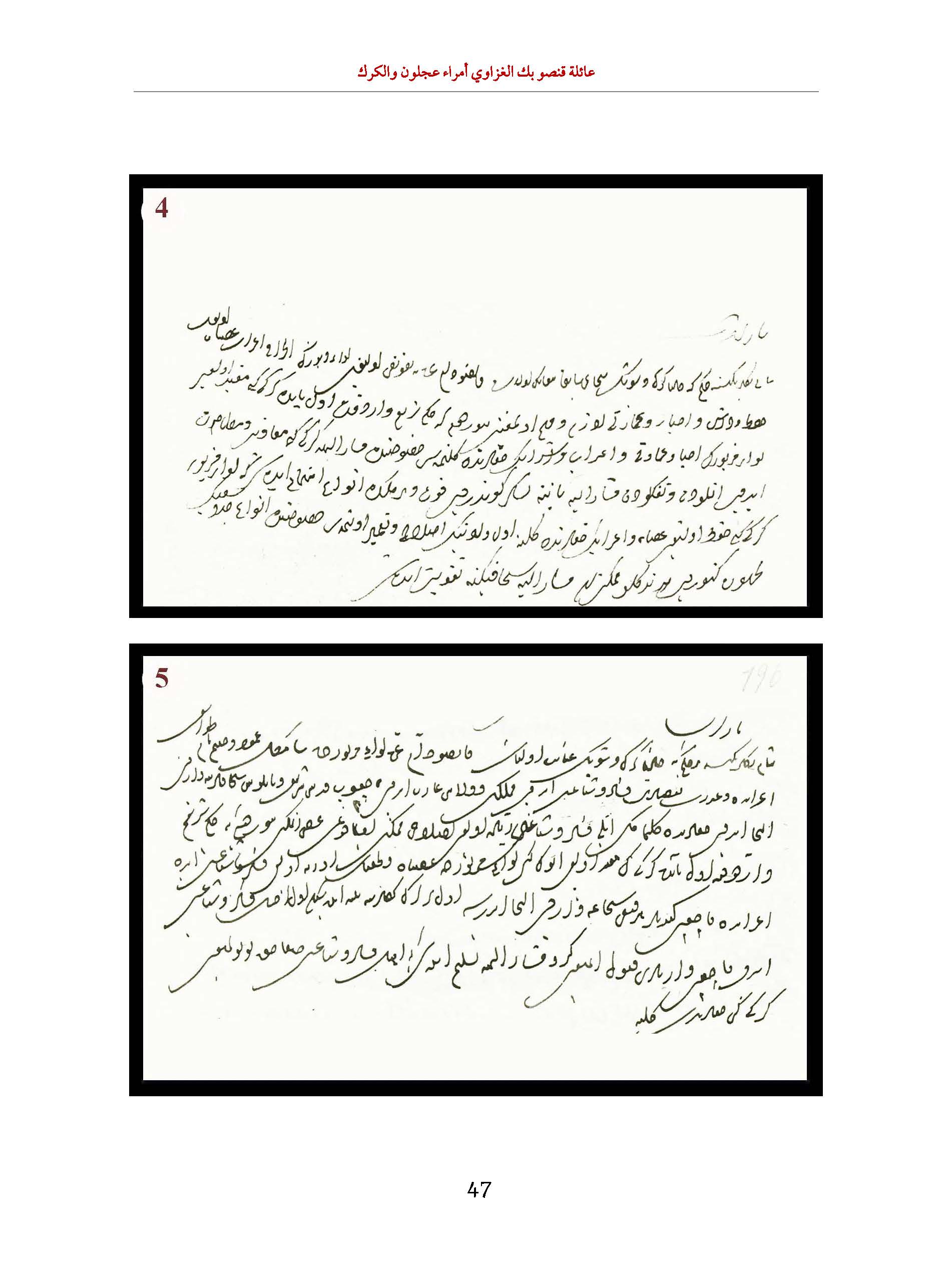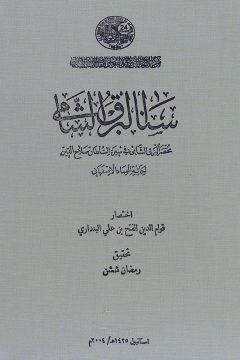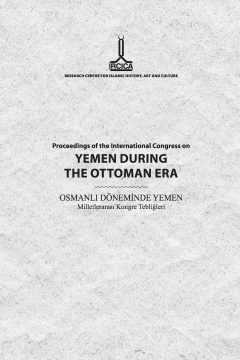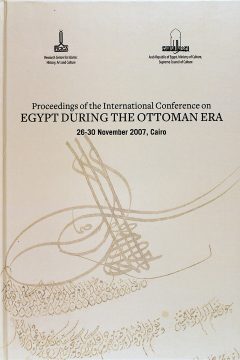This book came out as a result of IRCICA’s continual engagement to publish documents from the Ottoman archives to render them accessible to researchers. It was prepared at the request of the Royal Jordanian Hashemite Documentation Center. IRCICA’s expert Prof. Dr. Fazil Bayat was assigned to prepare the book, which was done on the basis of the hundreds of documents that are preserved in the Ottoman Archives in Istanbul. These documents are among the rarest sources on the history of Jordan, most of them unpublished before. The documents shed light on the four centuries of Ottoman administration in the region.
Documents relating to Jordan hold an important place in the collections of the Ottoman Archives due to the historical significance of Jordan located on the pilgrimage routes that cross Bilad al-Sham from Damascus to the Haramayn and on account of the various events the region witnessed throughout the Ottoman era. These documents are classified in the Ottoman Archives system under the same designations they were assigned by the Ottoman State departments. In the book, the author grouped them under chronologically ordered subject headings and gave information on their contents, delving into the background and general historical context of each subject treated in the documents. Given the impossibility of publishing whole collections of documents, the author limited the book to 413 documents that he examined under the following chapter headings: The Early Rise of Ottoman Rule in the Regions of Ajlun, Karak, Shubak and Maʿan; Qansuh Bey Al-Ghazzawi Family: The Emirs of Ajlun and Karak; The Rule of Pashas; Administrative Affairs; Municipal, Urban, Public Health and Public Services Affairs; Education and Teaching Establishments; Christian Missionary Educational Institutions; Judicial Affairs; Islamic Institutions, Waqfs and Religious Affairs; Matters Relating to Christian Communities; Jordanian Personalities in the Local Administrations and the Ottoman Chamber of Deputies (Meclis-i Mebusan); Tributes Paid to City Notables and Chieftains; Accommodation of İmmigrants.
The majority of the documents published in the book consist of sheets, most of them official letters, some of them comprised in the Registers (Defter). The book also contains two geographical maps and 23 historical photographs of Jordan from early 20th century.
The documents presented in the book clarify many unknown aspects of the history of Jordan and demystify some facts surrounding this history. Therefore, they are essential sources for anyone interested in the history of Jordan during the period under focus.


